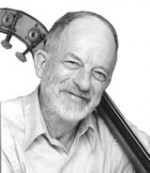Allegro
The Band Room
November '18
Volume 118, No. 11November, 2018

Bill Crow
www.billcrowbass.com
The high school band that I was a member of in Kirkland, Washington during the early 1940s prided itself on its musicianship. We had a challenge system that the director had set up. If you felt that you could play better than the kid sitting ahead of you in your section, you could drop a challenge on the director’s podium. Every Wednesday, challenges were addressed. Two musicians would go into the instrument closet where they couldn’t be seen by the others, and each would play their part on one of the numbers we had rehearsed, and on one piece of music they hadn’t seen before. Then the band members would vote to see who claimed the higher chair.
I was one of two baritone horn players in that band, and we challenged each other regularly. There was also rivalry in the trumpet section, and among the clarinets. The system kept us on our toes, encouraged us to practice, and gave us a strong sense of the importance of musicianship.
One day a new kid in school came to the band rehearsal room. “I’d like to be in the band,” he said. “I was in the band when we lived in Bothell.”
The director welcomed him, and asked, “What instrument do you play?”
His response became a tag line in that band for years.
The boy replied, “I carry the flag.”
![]()
I knew the late Randy Weston around New York during the 1950s when we were both on the New York jazz scene. I got to play with him a few times, and spent some pleasant hours with him, listening to other jazz musicians in New York nightclubs.
After my first book was published, I was invited to a press party in a Times Square building where the room was absolutely jammed with people from the jazz and Broadway theater world, sipping cocktails, nibbling canapés and chatting with each other. I was standing next to Randy, but I couldn’t talk to him comfortably because he was so tall, and the press of the crowd prevented him from bending down to me. But across the room, Geoffrey Holder, the very tall dancer, stood above the throng just like Randy. Their heads were both above the rest of the crowd. And so, even though they stood a couple of yards from each other, they chatted away as if they were the only ones present.
The last time I saw Randy was last year. A film crew was recording interviews with various jazz musicians for a documentary they were making. As I left the studio after my interview, I passed Randy coming in to do the next one. We had a few minutes to greet each other and enjoy the happenstance, and then we parted. It was much too short an encounter with a man that meant so much to me, but in this life you savor the good things that come your way, however brief.
![]()
A contractor booked Ron Wasserman for two gigs. Each had a rehearsal, and at the first one Ron got a call from the contractor.
“Where are you?” he asked. “On your gig,” replied Ron. After a sort of Abbot and Costello conversation, they realized that the contractor had mistakenly booked both rehearsals for the same day, at different locations. Ron missed the other rehearsal, but made both gigs. He said, “I can’t remember if he ever called me again.”
![]()
Kirby Tassos tells me he heard that years ago Lou Marini of “The Blues Brothers” fame was doing a recording session with some of the best studio players of that time. On hearing the first playback, Lou noticed that he was playing a bit sharp to the rest of the band. Alan Rubin leaned over and said, “That’s okay, Lou. On the next take we’ll all come up to you.”
![]()
Chris Jentsch traveled to Peru last summer. In a nice restaurant in Cusco, a trio of musicians was setting up. They were in traditional dress. One had a pan flute, one a mandolin and a kick drum, and one an amplified nylon-string guitar. They set up some microphones and seemed ready to play and sing traditional Peruvian music. Then, after trying to get someone’s attention without success, the mandolin player put down his instrument and went to the bar to ask them to turn down the sound on the World Cup TV broadcast. Chris said, “Some musicians’ pet peeves seem to be universal.”
![]()
Schaen Fox told me that he once went on an archaeological and anthropological tour of the Mayan Yucatan region of Mexico. In one of the small towns they visited near ancient ruins, people had gathered in a small park to select the traditional “Princess of Spring.” A small band played as cars brought in a group of young girls who tossed candy to the crowd. The band stopped while an announcer addressed the onlookers. Schaen thought he might be witnessing a ceremony that had endured from the days of the Mayas. Then, as the girls walked to the stage, the band played “Uptown Funk.”
